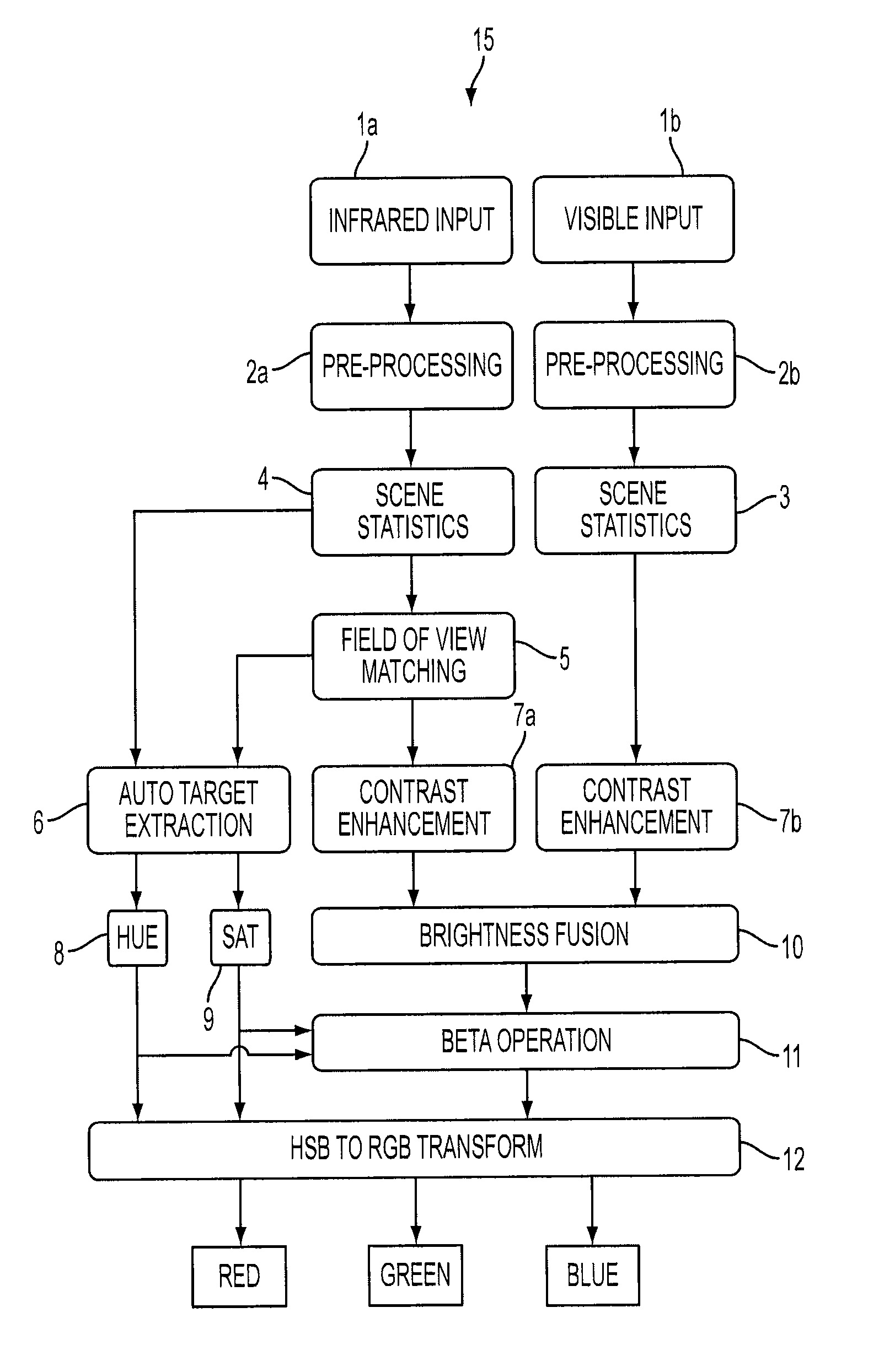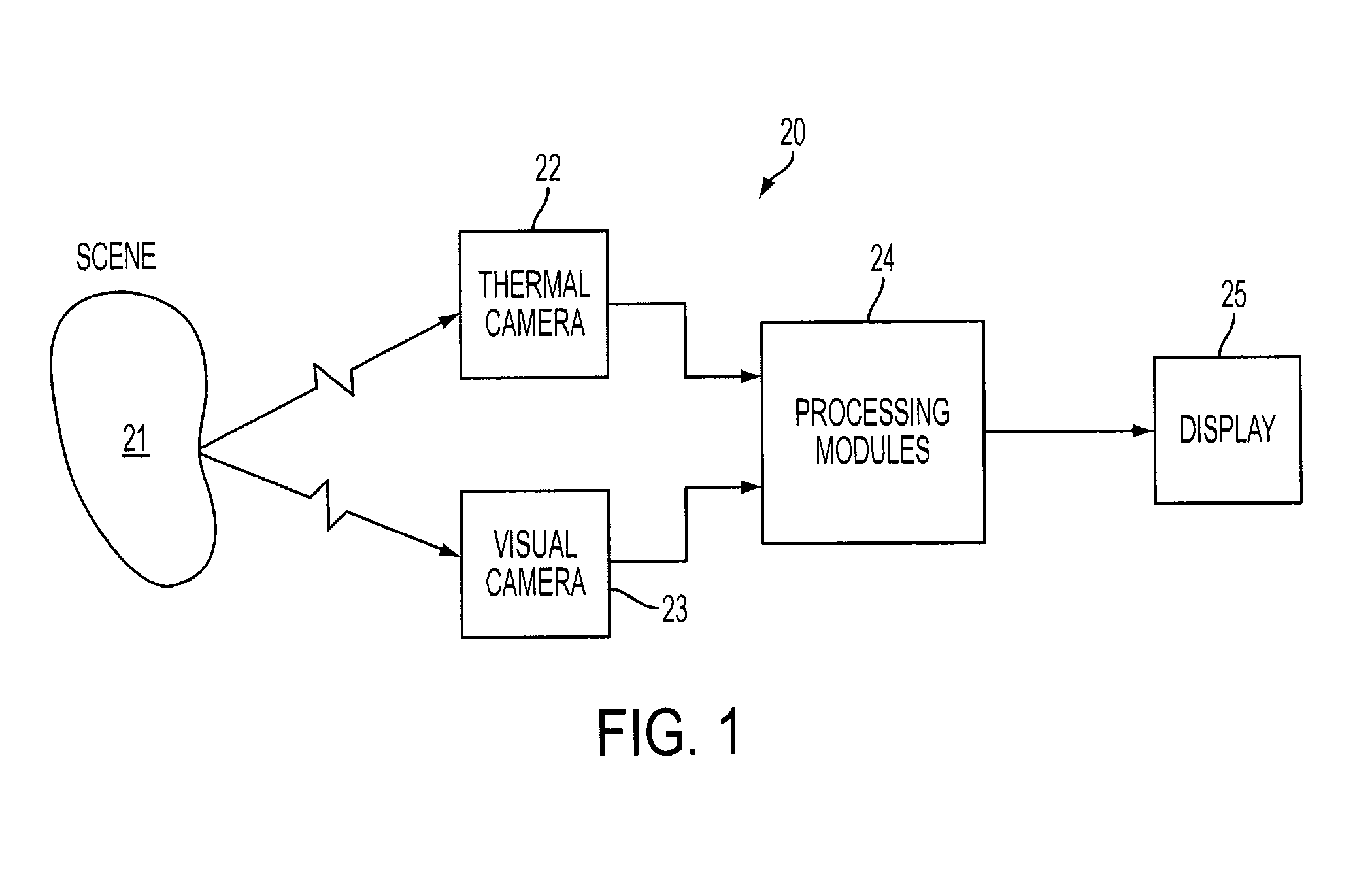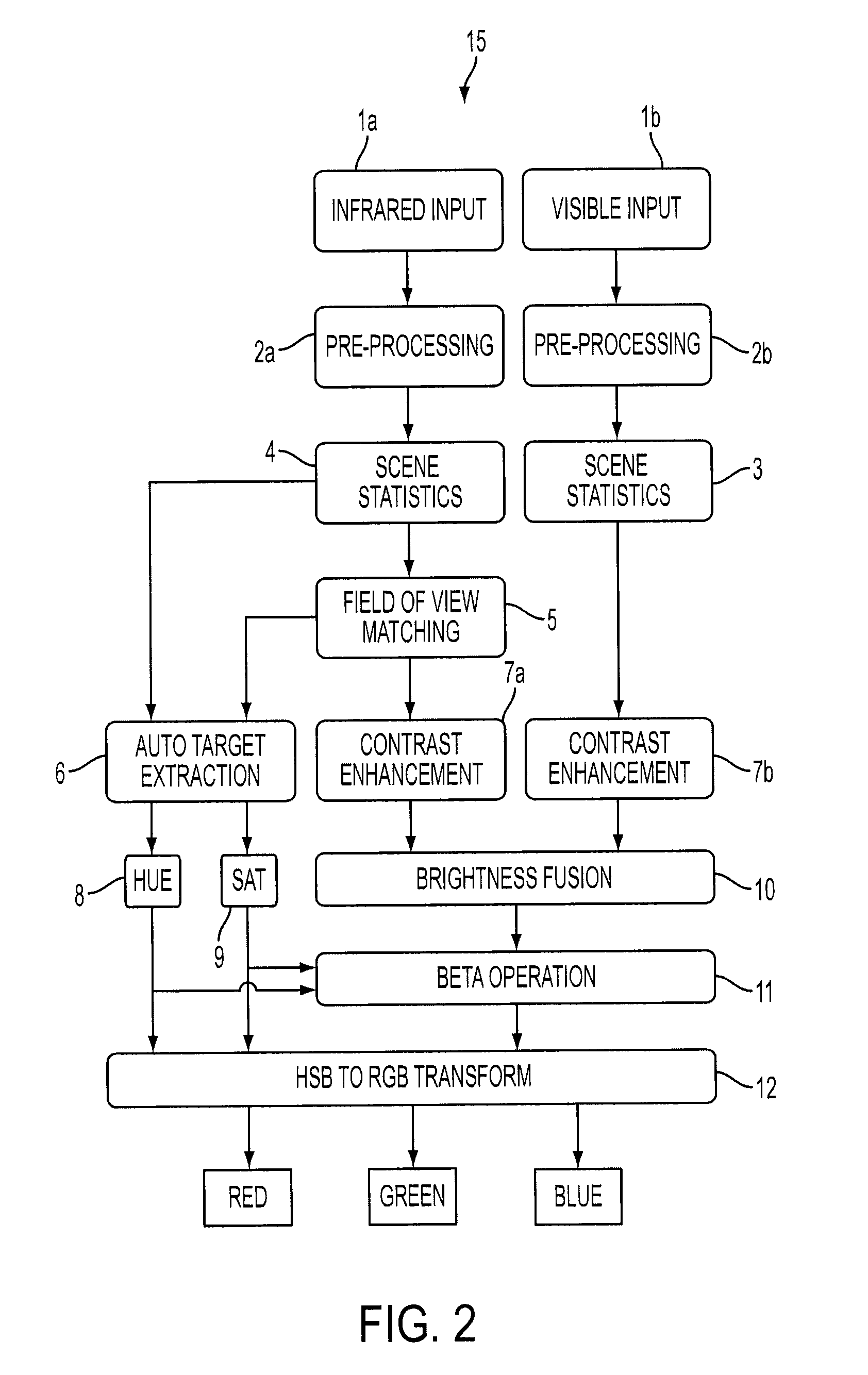Smart fusion of visible and infrared image data
a technology of infrared image and fusion, applied in the field of infrared image fusion, can solve the problems of ineffective infrared image, difficult to interpret the final output color of a scene obtained by a thermal imager by a human observer, and the inability to achieve natural objects
- Summary
- Abstract
- Description
- Claims
- Application Information
AI Technical Summary
Benefits of technology
Problems solved by technology
Method used
Image
Examples
Embodiment Construction
[0065]The present invention combines two images, for example, a visual image and an infrared image. The combined image includes a spatial intensity band that contains the best information from each image. The present invention detects and colorizes warm objects, such as humans and automobiles, and leaves non-warm objects gray, without color. It does this by processing the IR channel separately to find warm targets, while it simultaneously merges intensity bands together from the two images. After merging the intensity bands and detecting and processing the warm targets, the present invention performs a ‘beta’ operation and a transformation operation, converting hue-saturation-brightness (HSB) color spaces into red-green-blue (RGB) color spaces. The beta operation and the transformation operation are performed automatically without any user intervention.
[0066]The final image provided by the present invention includes fused spatial data from each band and colorized hot or warm objects...
PUM
 Login to View More
Login to View More Abstract
Description
Claims
Application Information
 Login to View More
Login to View More - R&D
- Intellectual Property
- Life Sciences
- Materials
- Tech Scout
- Unparalleled Data Quality
- Higher Quality Content
- 60% Fewer Hallucinations
Browse by: Latest US Patents, China's latest patents, Technical Efficacy Thesaurus, Application Domain, Technology Topic, Popular Technical Reports.
© 2025 PatSnap. All rights reserved.Legal|Privacy policy|Modern Slavery Act Transparency Statement|Sitemap|About US| Contact US: help@patsnap.com



